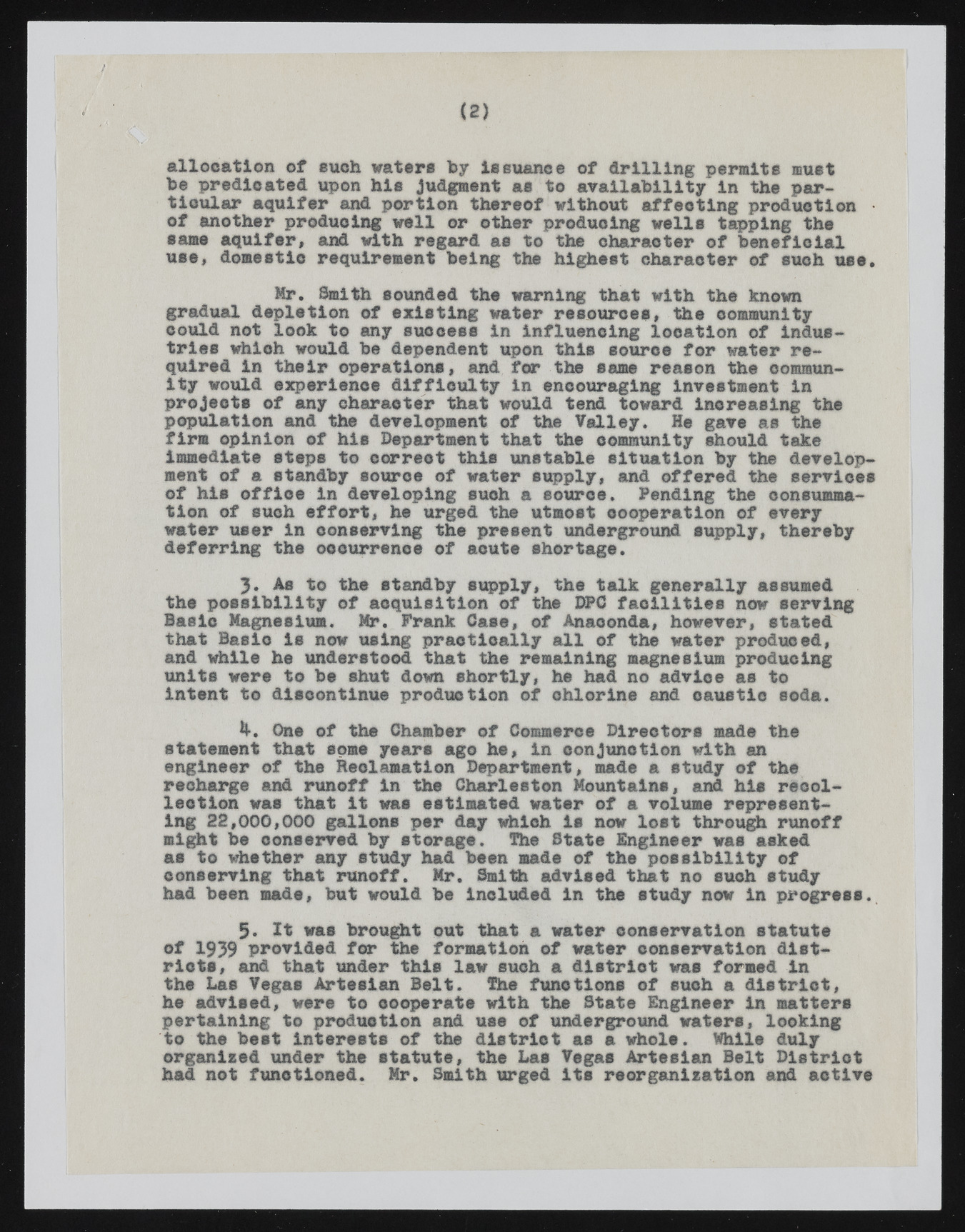Copyright & Fair-use Agreement
UNLV Special Collections provides copies of materials to facilitate private study, scholarship, or research. Material not in the public domain may be used according to fair use of copyrighted materials as defined by copyright law. Please cite us.
Please note that UNLV may not own the copyright to these materials and cannot provide permission to publish or distribute materials when UNLV is not the copyright holder. The user is solely responsible for determining the copyright status of materials and obtaining permission to use material from the copyright holder and for determining whether any permissions relating to any other rights are necessary for the intended use, and for obtaining all required permissions beyond that allowed by fair use.
Read more about our reproduction and use policy.
I agree.Information
Digital ID
Permalink
Details
More Info
Rights
Digital Provenance
Publisher
Transcription
/ (2) Allocation of such waters by issuance of drilling permits must toe predicated upon his Judgment as to availability in the particular aquifer and portion thereof without nffeoting production • of another producing well or other producing wells tapping the same aquifer* and with regard as to the character of beneficial use* domestic requirement toeing the highest character of such use* Mr. Smith sounded the warning that with the known gradual depletion of existing water resources* the community could not look to any success in influencing location of industries which would toe dependent upon this source for water required in their operations* and for the same reason the community would experience difficulty in enoouraging investment in projects of any character that would tend toward increasing the population and the development of the Talley. He gave as the firm opinion of hie Department that the community should take Immediate steps to correct this unstable situation toy the development of a standby source of water supply* and offered the services of his office in developing euoh a source. Pending the consummation of such effort* he urged the utmost ooopsration of every water user in conserving the present underground supply* therstoy deferring the oeourrenoe of aoute shortage. J. As to the standby supply* the talk generally assumed the possibility of acquisition of the DPC facilities now serving Baelo Magnesium. Mr. Frank Case, of Anaoonda* however* stated that Baelo is now using praotloally all of the water produced, and while he understood that the remaining magnesium producing units were to he shut down shortly* he had no adviee as to intent to discontinue production of chlorine and oauetle soda. k. One of the Chamber of Commerce Directors made the statement that some years ago he, in eonJunotlon with an engineer of the Reclamation Department* made a study of the reoharge and runoff in the Charleston Mountains* and his recollection was that it was estimated water of a volume representing 22*000*000 gallons psr day whloh is now lost through runoff might toe oonserved toy storage. The State Engineer was asked as to whsthor any study had been made of the possibility of conserving that runoff. Mr. Smith advised that no suoh study had been mads* tout would toe included in the study now in progress. *>. Zt was brought out that a water conservation statute of 1939 provided for the formation of water conservation diet- riots* and that under this law euoh a district was formed in the Las Vegas Artesian Belt. The functions of suoh a district* he advised* were to oooperate with the State Engineer In matters pertaining to produetlon and use of underground waters, looking to the best Interests of the district as a whols. While duly organised under the statute, the Las Vegas Artesian Belt Dlstriot had not funotioned. Mr. Smith urged its reorganization and active

